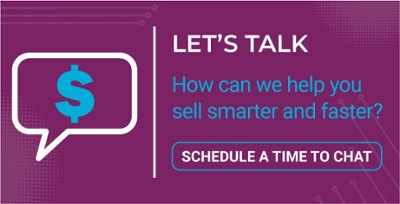
I review and analyze websites on a pretty regular basis — for clients and prospects alike. While the level of functionality, design, messaging, and strategy for each one varies dramatically, there is one thing I see time and time again (or really a LACK of something). These rather simple, yet incredibly impactful, components of a great website are CTAs (calls-to-action) and forms. Seems easy enough, but then why is it that so many organizations don’t have CTAs and forms placed strategically around their websites?
You might be thinking, “Dani, who cares? What’s the big deal? I have a beautiful, perfectly crafted, well-worded website that drives decent amounts of traffic and tells our story perfectly. What is another CTA or form going to do?” Well… let me tell you what you’re missing out on without having these key conversion opportunities throughout your website.
1. Know Who's Interested So Sales Can Follow Up
If your business is centered around selling something (and I imagine it is), then you need to KNOW who is on your website in order to fully utilize it for its true purpose (to sell said things). And the only way to know who they are is to have them fill out a form and tell you. Yes, it’s that simple. When you provide valuable reasons for people to fill out a form, you'll know who is actually clicking around on your site — and have the option to contact them further.
2. Guide Prospects to Take the Next Step
If you don’t tell people what to do, they won’t do it. This is a life lesson — but I’ll stick to business here. If you want prospects to contact you, or to buy something, or to download something, or to sign up for a demo, or to share an article with a friend… then you need to ask them, or rather tell them. Don’t assume anything (because you know what happens when you do that), but instead make it easy for them to know what action they can take. By strategically placing CTAs throughout your homepage, website pages, and blog, you’re going to guide your visitors (aka: potential customers) to learn, make contact, engage, and purchase.
3. Make Contact Easy
Asking someone on your website to email or call you without an easier form of communication is outdated and ineffective. If your contact us page simply lists an email address, physical address, and/or your phone number, then I can guarantee you are missing out on opportunities. People expect things to be easy. They expect to be able to take this action right away (via a form) without having to navigate somewhere else. We expect a certain experience when we’re online, and if you aren’t giving them what they expect, they’re very likely to go somewhere else.
4. Capture Prospects at the Top of the Funnel
It’s likely that you have a contact us form, maybe even a subscribe-to-the-newsletter form, but do you have other (and especially more top-of-the-funnel) forms that will help you identify those folks earlier in the sales process? This is what inbound marketing is all about, and why having premium content with landing pages and forms is so important. I don’t care what industry you are in, the job of a salesperson has gotten harder. There is more competition, more information, more options… and we are all time starved. So, identifying and being able to contact and nurture leads who are in the research and consideration stages (not just the decision making stage and ready to talk to sales via your contact us form) is going to open up so many doors for your sales team.
5. Lead Prospects Deeper
People need a reason to stay on your website. We are all busy and our attention is easily lost. By having different links and CTAs guiding your website visitors to additional information on your site, you're making it easy for them to keep clicking, and eventually make some kind of contact. At the very least, you’re keeping them on your site longer, increasing the likelihood of them remembering your business and coming back again.
As you can see, your website is open for improvement if there aren’t a variety of ways to convert from visitor to lead (via a form) and gentle reminders throughout (CTAs) telling them where to go and what to do next. Use this information to take your website to the next level. It doesn’t have to be rocket science, but it certainly starts with a plan. If you want to learn more about how we help companies build a lead generation plan for their website (and beyond), let’s talk. I’d love to tell you more.
.png)








Leave a Comment